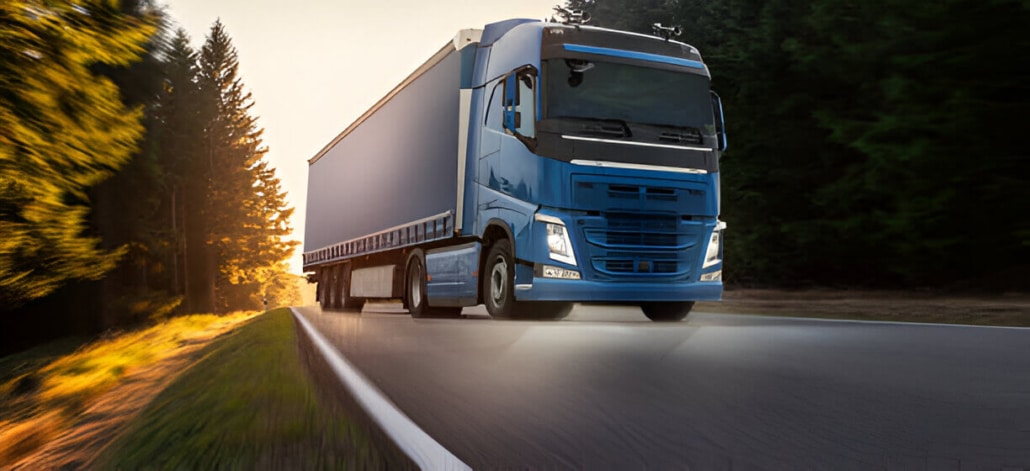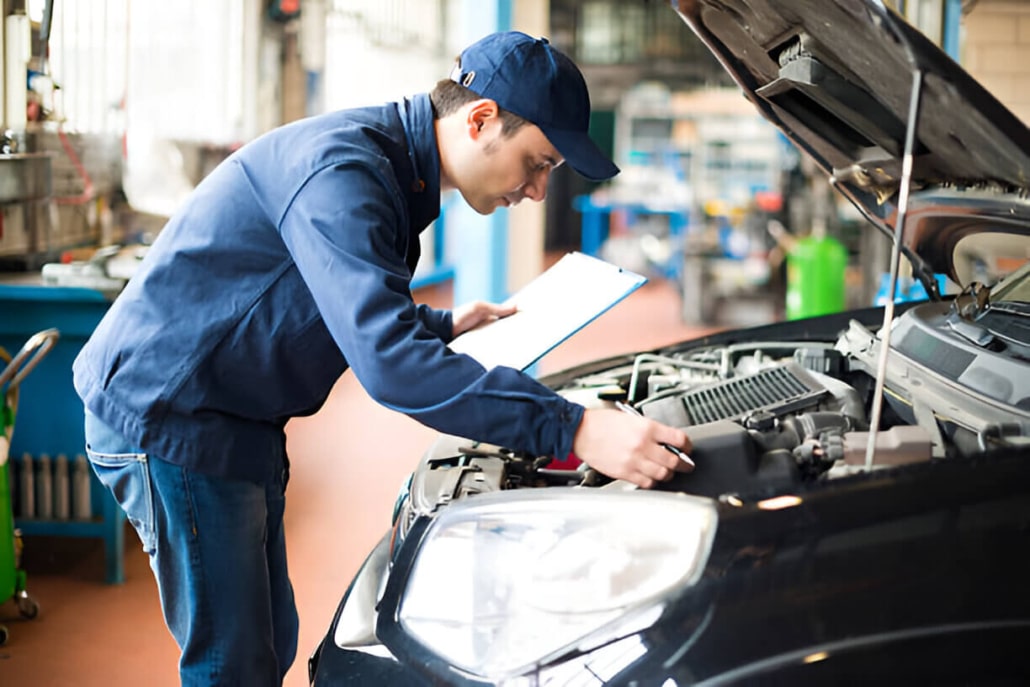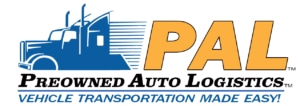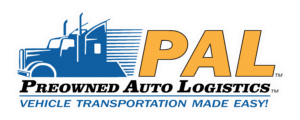Shipping High-End and Classic Cars Across State Lines: What to Know
Shipping High-End and Classic Cars Across State Lines: What to Know
Transporting high-end and classic cars requires meticulous care. These vehicles often represent significant financial investments or hold immense sentimental value. Even minor damage can lead to costly repairs or loss of their unique appeal. The increasing demand for enclosed transportation services highlights the need to protect these valued possessions. As of 2023, the global market for enclosed car transportation stands at $724.2 million, with projections estimating a 7% annual growth rate until 2032. The rise of luxury and classic car transport options reflects the demand for specialized shipping solutions. Protecting your vehicle during transit is not just a recommendation, it is a necessity.
Why High-End and Classic Cars Need Special Attention
High value and rarity
High-end and classic cars often represent more than just vehicles; they are investments or cherished possessions. Their rarity and unique features make them irreplaceable. Damages during transport can lead to significant financial losses or emotional distress. For this reason, these vehicles require specialized care during transit.
- Enclosed transport is highly recommended to shield these cars from road debris and harsh weather conditions.
- Sealed trailers with interlocking door systems provide maximum protection, ensuring the vehicle remains in pristine condition.
- The cost of enclosed transport, typically ranging from $150 to $350, is a small price to pay compared to the value of most classic cars.
With 75% of actively driven classic cars being American-made, the demand for specialized transport services continues to grow. Choosing the correct shipping method ensures your vehicle arrives safely, preserving its value and integrity.
Sensitive paint and finishes
Luxury and vintage cars often feature custom paint jobs, chrome accents, or intricate bodywork. These finishes are highly sensitive and can be easily damaged by exposure to environmental elements. Even minor scratches or chips can diminish the car’s aesthetic appeal and reduce its value.
To protect these delicate surfaces, you should opt for enclosed transport. This method minimizes exposure to weather, road dust, and debris. Additionally, carriers specializing in classic car transport often use soft straps and padded tie-downs to prevent scratches or dents during transit. Taking these precautions ensures your vehicle’s unique finishes remain flawless.
Low ground clearance or custom modifications
Many high-end and modified vehicles have low ground clearance, which presents unique challenges during transport. Cars with less than 4 inches of clearance require specialized handling to avoid damage. Standard carriers often use steep ramps, which can scrape the underside of the vehicle.
Premium transport providers address this issue by using hydraulic liftgate systems. These systems allow for smooth loading and unloading, eliminating the risk of undercarriage damage. If your car features custom modifications like body kits or spoilers, ensure the carrier has the necessary equipment to accommodate these features. Proper handling is essential to maintain the integrity of your vehicle during transit.
Choosing the Right Type of Carrier
Enclosed vs. Open Transport
Selecting the proper transport method is crucial for safeguarding your high-end or classic car during transit. Enclosed transport offers superior protection compared to open transport, making it the preferred choice for luxury and vintage vehicles.
- Enclosed trailers shield your car from external elements such as rain, snow, and hail, which can damage sensitive paintwork.
- They also prevent exposure to road debris, ensuring your vehicle arrives in pristine condition.
- Enclosed transport provides a discreet option, reducing the risk of theft or unwanted attention during transit.
While open transport may be more budget-friendly, it exposes your vehicle to weather and road hazards. This option is better suited for standard vehicles rather than high-value or rare cars. Preowned Auto Logistics offers both enclosed and open transport services. Their team can guide you in choosing the best option based on your vehicle’s needs and your budget.
Liftgate or soft-strap loading
The loading and unloading process is another critical factor in ensuring your vehicle’s safety. Premium carriers use advanced equipment like hydraulic liftgates and soft straps to handle cars with care. These tools prevent damage to the undercarriage and frame, which is especially important for vehicles with low-ground clearance or custom modifications.
Hydraulic liftgates allow for smooth, level loading and unloading, eliminating the risk of scraping the underside of your car. Soft straps secure the vehicle without causing scratches or dents, unlike chains or metal hooks that can damage the paint or bodywork. Avoid carriers that rely on steep ramps or outdated equipment, as these methods increase the likelihood of harm to your vehicle.
By choosing a transport provider that prioritizes proper handling techniques, you can ensure your car remains in perfect condition throughout the journey. This attention to detail is essential for preserving the value and integrity of your high-end or classic car.

Insurance and Documentation Essentials
Confirm sufficient insurance coverage
A reputable transport company should provide full coverage tailored to the unique needs of these vehicles. This ensures that any potential damage during transit is adequately covered, giving you peace of mind.
Start by requesting proof of insurance from the carrier. Review the policy details carefully to confirm that it includes comprehensive coverage for luxury or classic car transport. Pay attention to the coverage limits and exclusions. If the policy does not meet your expectations, consider purchasing additional insurance to protect your investment.
Understanding the claims process is equally important. Ask the transport provider to explain how claims are handled in case of damage. Knowing the steps to take and the documentation required can save you time and stress if an issue arises. By ensuring sufficient insurance coverage, you safeguard your vehicle and minimize financial risks.
Conduct and document a detailed vehicle inspection
A thorough vehicle inspection before transport is a critical step in protecting your car. This process helps establish the vehicle’s condition before shipping, reducing the likelihood of disputes over damage claims.
Begin by cleaning your car to make any existing scratches, dents, or imperfections more visible. Take clear, high-resolution photos of all sides of the vehicle, including close-ups of any pre-existing damage. Ensure each photo is dated for accurate record-keeping. These images serve as evidence of the car’s condition before transport.
Pre-transport inspections are crucial for this reason. Carriers will note any existing damage on the Bill of Lading. Failing to document this prior to transport makes it harder to prove any new damage was caused by them.
During pickup, review the Bill of Lading carefully. This document outlines the vehicle’s condition and serves as a contract between you and the carrier. Verify that all existing damage is accurately recorded. If you notice discrepancies, address them immediately with the driver. Retain a copy of the Bill of Lading for your records.
By conducting a detailed inspection and maintaining proper documentation, you create a solid foundation for resolving any potential issues. This proactive approach ensures your classic car transport experience is smooth and worry-free.
Preparing Your Vehicle for Classic Car Transport
Cleaning and inspecting the vehicle
Before shipping your classic car, cleaning and inspecting it thoroughly is essential. A clean vehicle allows you to identify any existing scratches, dents, or imperfections that might otherwise go unnoticed. Dirt and grime can obscure these details, making it harder to document the car’s condition accurately.
- Wash the exterior carefully, paying close attention to sensitive areas like chrome accents or custom paintwork.
- Vacuum the interior to remove dust and debris, ensuring the cabin is spotless.
- Inspect the tires for proper inflation and check for any signs of wear or damage.
Conduct a detailed inspection once the car is clean. Look for any pre-existing damage, such as chips in the paint or minor dents. This step ensures you have a clear understanding of the car’s condition before handing it over to the transport provider.
Documenting the vehicle’s condition
Documenting your vehicle’s condition is a critical step in preparing for transport. This process provides a record that protects you in case of disputes over damage claims. Start by taking high-resolution photos of the car from multiple angles. Include close-ups of any existing damage, such as scratches, dents, or paint imperfections.
- Use a well-lit area to capture clear, detailed images.
- Ensure the photos are time-stamped to verify when they were taken.
- Take additional photos of unique features, such as custom modifications or rare finishes.
Keep a written record of the car’s condition, noting any mechanical issues or cosmetic flaws. This documentation serves as a safeguard, ensuring you can address any discrepancies if new damage occurs during transit.
Removing personal belongings and accessories
Removing personal belongings and custom accessories from your car is vital for its safety during transport. Items left inside the vehicle can shift during transit, potentially causing damage to the interior. Additionally, visible belongings may attract unwanted attention, increasing the risk of theft.
- Clear out all loose items from the cabin, including floor mats, electronics, and personal effects.
- Remove custom accessories, such as spoilers, roof racks, or antennae, to prevent them from becoming loose or damaged.
- Disable car alarms to avoid unnecessary battery drain during the journey.
By removing these items, you not only protect your car but also comply with the transport provider’s safety guidelines. This step ensures a smoother shipping process and reduces the risk of complications.
Ensuring the vehicle is mechanically ready
Preparing your vehicle mechanically before transport is essential to avoid complications during the journey. A well-maintained car ensures a smoother shipping process and reduces the risk of delays or damage. Start by conducting a thorough mechanical check to confirm that your vehicle is in optimal condition.
- Inspect the battery: Ensure it is fully charged and securely mounted. A weak or loose battery can cause starting issues during loading or unloading.
- Check for leaks: Examine the undercarriage for any signs of fluid leaks, such as oil or coolant. Addressing leaks beforehand prevents potential damage to your car or other vehicles in the carrier.
- Verify tire condition: Inspect all tires for proper inflation and tread wear. Underinflated or damaged tires can compromise the vehicle’s stability during transport.
Adjusting fuel levels for transport
Fuel levels play a crucial role in preparing your car for transport. Keeping the right amount of fuel in the tank ensures safety and efficiency during the journey. Most transport companies recommend maintaining a fuel level of about one-quarter of the tank’s capacity.
- Why limit fuel? A full tank adds unnecessary weight to the vehicle, increasing transport costs and the risk of leaks.
- Why not empty? A small amount of fuel is necessary to start and move the car during loading and unloading.
Additionally, check the fuel cap to ensure it is tightly secured. A loose cap can result in spillage, which may damage your car or other vehicles in the carrier. Adjusting fuel levels properly not only complies with transport guidelines but also contributes to a safer and more efficient shipping process.

Selecting a Trusted Transport Provider
Experience with luxury and classic vehicles
When shipping high-value vehicles, experience matters. A transport provider with expertise in handling luxury and classic cars understands the unique care these vehicles require. From low ground clearance to delicate finishes, every detail must be managed with precision. Companies like Preowned Auto Logistics, which has over a decade of experience, demonstrate the importance of specialized knowledge. Their team of experts ensures vehicles arrive in the same condition as when they left, even for global shipments.
Consider these real-world examples that highlight the value of experience:
- A rare vintage car worth millions was transported door-to-door, arriving ahead of schedule and in perfect condition.
- A luxury sports car was shipped from New York to California using enclosed transport, ensuring its pristine condition upon arrival.
- A fully restored 1965 Mustang was carefully handled by a classic car restorer, emphasizing the need for specialized transport to protect delicate vehicles.
These cases illustrate why choosing a provider with a proven track record is essential. Preowned Auto Logistics, known for its expertise in classic car transport, offers the reliability and care your vehicle deserves.
Transparent quotes and customer support
Transparency and communication are key when selecting a transport provider. A detailed quote with no hidden fees ensures you understand the costs upfront, avoiding surprises later. Reliable companies prioritize transparent pricing and provide comprehensive breakdowns of their services.
Customer support is equally important. A trusted provider maintains consistent communication throughout the shipping process, from pickup to delivery. This level of service keeps you informed and reassured, especially when transporting valuable vehicles. Look for companies that invest in technology to enhance customer experience. Digital solutions, such as real-time tracking, provide visibility into your vehicle’s journey, offering peace of mind.
The following table outlines key criteria to evaluate a transport provider’s reliability:
| Criteria | Description |
| On-time pickup and delivery | Ensures drivers arrive as scheduled; review company’s track record for metrics to determine reliability. |
| Reliable carrier network | Importance of an experienced and trusted carrier network; evaluation of carriers’ legitimacy, insurance, and safety ratings. |
| Investments in technology | Digital solutions that streamline vehicle moves and provide transit visibility; a technology-focused partner can help solve challenges faced by businesses. |
| Focus on customer service | Commitment to client success; collaboration to enhance operational efficiency and revenue opportunities. |
| EV shipping capabilities | Knowledge of unique challenges in EV transport; selection of highly-qualified carriers for electric vehicles. |
| Attentive claims process | Clear communication regarding claims; in-house claims department resolves issues quickly, ensuring minimal stress for clients. |
Common Mistakes to Avoid
#1. Choosing open transport for rare or high-value vehicles without weighing the risks
Opting for open transport is a cost-effective solution, but it exposes your high-value or rare vehicle to unnecessary risks. Open carriers leave vehicles vulnerable to weather conditions, road debris, and potential damage during transit. For luxury or classic cars, even minor scratches or dents can significantly reduce their value.
Enclosed transport offers a safer alternative. It shields your vehicle from external elements, ensuring it arrives in pristine condition. While enclosed transport may cost more upfront, it provides peace of mind and protects your investment. Always weigh the risks and benefits before deciding on the transport method. For rare or high-value vehicles, the added protection of enclosed transport is worth the expense.
Tip: If your car has custom paintwork or delicate finishes, enclosed transport is the best option to preserve its appearance.
#2. Not verifying the carrier’s insurance and enclosed transport capabilities
Failing to verify a carrier’s insurance coverage and equipment can lead to costly mistakes. Not all transport companies offer sufficient insurance for high-value vehicles. Without proper coverage, you risk bearing the financial burden of any damage that occurs during transit.
Before booking, request proof of insurance and review the policy details. Ensure the coverage includes luxury or classic cars and provides adequate protection for their value. Additionally, confirm that the carrier has enclosed transport capabilities. Some companies may claim to offer enclosed transport but lack the necessary equipment or expertise to handle premium vehicles.
#3. Ignoring preparation steps like inspection, documentation, or removing custom parts
Skipping essential preparation steps can lead to disputes and unnecessary stress. Documenting your vehicle’s condition before transport is crucial. It establishes a clear baseline and helps resolve any claims for damage.
- Take high-resolution photos of your car from multiple angles, including close-ups of any existing damage.
- Note the vehicle’s condition in writing, highlighting any mechanical or cosmetic issues.
- Compare your documentation with the Bill of Lading provided by the carrier to ensure accuracy.
Neglecting these steps increases the risk of disputes. Without proper documentation, holding the transport company accountable for damages becomes nearly impossible. A pre-transport inspection also ensures your car is mechanically ready for the journey. Addressing issues like fluid leaks or underinflated tires prevents complications during transit.
#4. Booking with inexperienced or low-rated carriers based on price alone
Choosing a transport provider based solely on the lowest price can jeopardize the safety of your high-end or classic car. While budget carriers may seem appealing, they often lack the expertise, equipment, and resources necessary to handle luxury vehicles properly. This decision can lead to costly mistakes and unnecessary risks.
Inexperienced or low-rated carriers frequently cut corners to offer lower rates. These shortcuts can include using outdated equipment, hiring uncertified drivers, or neglecting essential maintenance. For example:
- Less experienced drivers may mishandle delicate vehicles during loading or unloading, causing scratches, dents, or other damage.
- Budget carriers often lack specialized tools like hydraulic lifts or dollies, which are critical for low-clearance cars or vehicles with custom modifications.
- Older trailers and ramps are prone to wear and tear and increase the risk of accidents, such as falling or collapsing during transport.
Additionally, budget carriers may not provide the advanced features required for luxury car transport. Real-time GPS tracking, climate control, and environmental monitoring are often absent, leaving you in the dark about your vehicle’s condition and location. Without these safeguards, your car becomes vulnerable to theft, tampering, or exposure to harsh weather conditions.
Insurance coverage is another critical factor. Many low-cost providers offer insufficient policies that fail to cover the full value of luxury or classic cars. In the event of damage, you could face significant out-of-pocket expenses. Furthermore, improper tie-downs, inadequate padding, and poor compartmentalization can result in excessive movement during transit, damaging sensitive components or finishes.
Conclusion
While saving money is necessary, the risks associated with inexperienced or low-rated carriers far outweigh the initial cost savings. Investing in a reputable transport provider ensures your vehicle receives the care and protection it deserves, preserving its value and condition throughout the journey.
Luxury and classic cars demand specialized care during interstate transport to preserve their value and condition. These vehicles often represent significant investments, requiring careful planning and expert handling.
- Enclosed transport provides superior protection, making it ideal for vintage or high-end cars.
- Partnering with a trusted auto transport company ensures a secure and efficient shipping experience.
- Proper handling safeguards your vehicle, maintaining its pristine condition throughout the journey.
By choosing reliable professionals, you protect your investment and ensure a seamless transport process tailored to your car’s unique needs.




